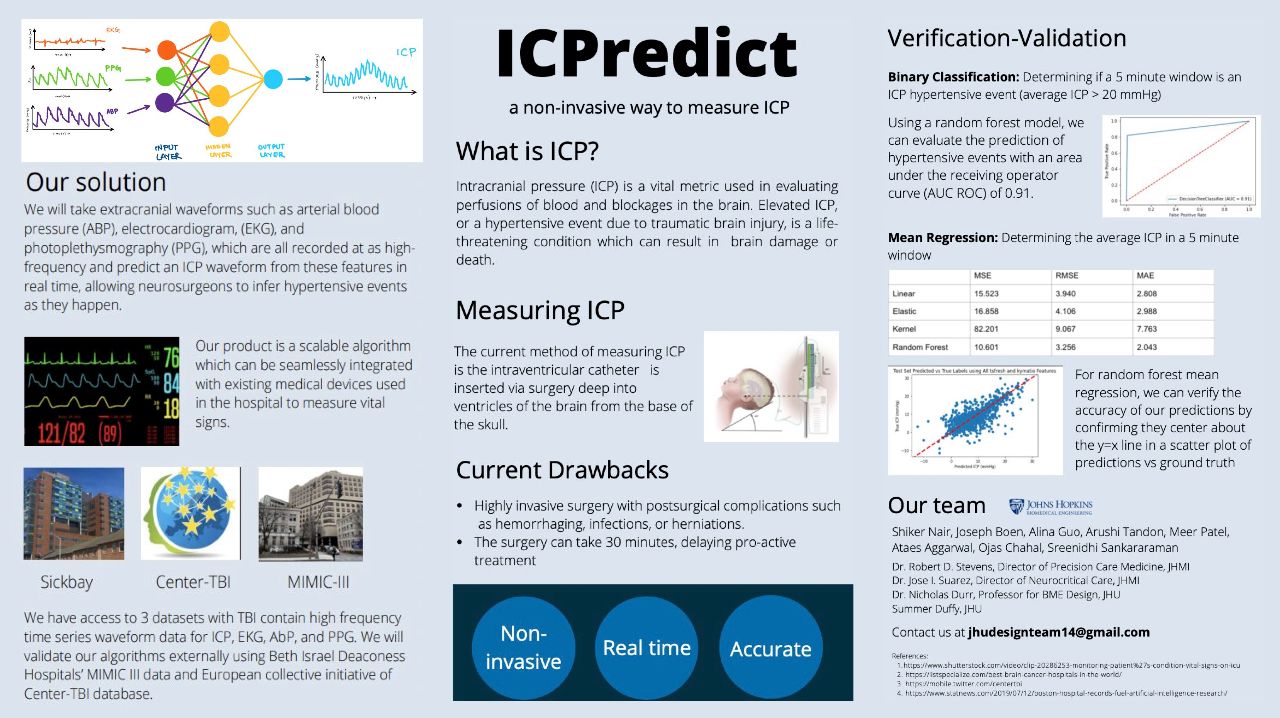ICPredict: A Non-Invasive Way of Measuring Intracranial Pressure
- Program: Biomedical Engineering
- Course: BME Undergraduate Design Team
Project Description:
A real-time machine learning method for non-invasively monitoring intracranial pressure from extracranial waveforms in the intensive care unit.
Patients with severe brain injuries are at risk for elevated intracranial pressure (ICP), also known as intracranial hypertension. The current method of monitoring ICP is accomplished via a surgically implanted intraventricular or intraparenchymal catheter. This procedure requires specialized expertise not available in many hospitals. Moreover the invasive nature of ICP monitors is directly linked to risks of intracranial hemorrhage and infection. There is an unmet need for new approaches to assess ICP which are less invasive or non-invasive, yet accurate and reliable. Studies indicate that elevations of ICP and abnormal intracranial compliance may be reflected in extracranial physiological signals, suggesting a novel methodology which is explored in this work. We designed an analytical paradigm using two large datasets of patients admitted to the intensive care unit who underwent invasive ICP monitoring (MIMIC III; CENTER TBI). Machine learning (ML) algorithms were trained with three routinely measured physiological signals: electrocardiogram (ECG), photoplethysmography (PPG), and invasive arterial blood pressure (ABP). High-frequency time series data were preprocessed and temporally segmented, and morphological features from each waveform were generated as input variables for several different ML classifiers, with invasive ICP readings serving as ground truth labels. Model outputs were ICP values (mmHg) in quasi real time. Preliminary results indicate mean average error of ± 2 mmHg, well within accepted standards for noninvasive ICP assessment. Future studies will build on this methodological paradigm to validate findings prospectively and to assess the feasibility of forecasting ICP and intracranial hypertension in defined populations of patients with brain injury.



